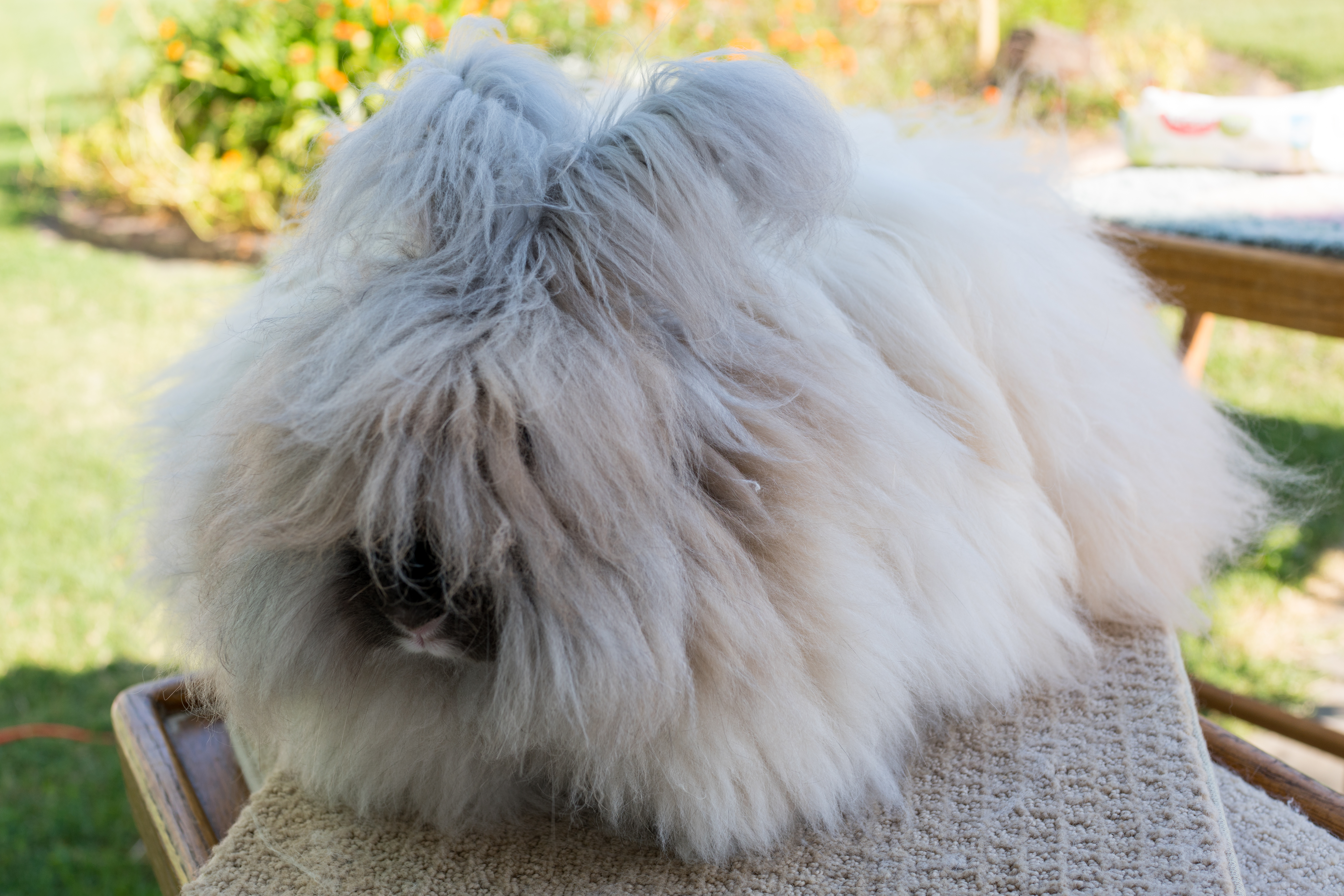
The impossibly fluffy Angora Rabbit is bred for its soft wool and was once a popular pet of royalty. These fur balls are a result of hundreds of years of selective breeding. Although they are still bred for their wool today, these adorable creatures are also popular pets and prize winning show bunnies.
Where did Angora Rabbits come from?
Though many believe that Ankara, Turkey, is their place of origin, the ancestry of Angora rabbits is debated to this day. The Romans recorded keeping longhaired rabbits as early as 100 BC. During the reign of King Henry the 8th they were referred to as “English Silk Hares” and highly sought after. Later, in the mid 1700’s they were the favourite pets of French royalty. Marie Antoinette kept Angora Rabbits at Versailles. In any case, the Angora is among the oldest breeds of domesticated rabbits.

How did they get so fluffy?
Their long silky fur is a result of selective breeding. Rabbits with the longest fur were bred with other rabbits with the longest fur. Longer fur meant more soft fluffy wool for the fashion industry. Scarves, sweaters and felt were and still are made from this rabbit’s fur. The average full-grown Angora rabbit produces 1.5 kg of wool each year.
What’s So Special About Their Fur?
“Angora wool” is soft, silky, and finer than cashmere. People who suffer from allergies to wool are usually unaffected by Angora.
Their extremely long fur must be removed manually to maintain the rabbits’ good health. The rabbits shed and can groom themselves to an extent, but too much fur ingestion can cause “wool block”, when a blockage of wool interrupts the rabbit’s digestive tract.
Therefore, because of human intervention, Angora rabbits rely on humans to get the job done. Angora rabbit owners and farmers have to remove the fur manually by brushing or sheering at least once every three months.

Is Angora Wool Ethical?
Although the wool needs to be removed for the health of the rabbit, the process used in large-scale commercial operations is unethical.
The world’s largest commercial producer of angora wool is China, where the standard process for obtaining the wool is by plucking.
Plucking is preferred because it maintains the longest and therefore most valuable lengths of fur. Anyone who has ever had their eyebrows plucked can imagine how horrible this would be for the rabbits. Instead of brushing or shearing, the fur is yanked from their little bodies, often while the animal is hanging upside down by its feet.
There are ethical sources of angora wool, but they are few and far between, not to mention expensive. Think twice before you buy.

What About Rabbit Shows?
Yes, rabbit shows are a thing. Just like dog and horse owners, rabbit owners can be competitive. Rabbits are judged for things like weight, fur quality, dental health, and how they look in a bikini. Kidding about that last one, but it really is a beauty pageant for rabbits.
All About The Breeds
There are four main types of Angora Rabbit as defined by the American Rabbit Breeders Association: English, French, Giant, and Satin.
English Angora
Once called the “Angora Wooler”, the English Angora is recognizable for fur that grows everywhere. Even on its face! They can look like living pom-poms with their eyes completely covered in fur. English Angoras are white, or white with black spots. Although in rabbit shows, the “broken colour” variety (white with black spots) is not accepted. They typically weigh between 2 and 3.5 kg.

French Angora
The French variety is known for its dense undercoat. They often require less shearing than the other types and are larger than the English breed at 3.5 – 4.5 kg. The French Angora’s hair stays short on its face and paws. Their ears are typically on the pointy side and their fur can be a variety of colours.

Giant Angora
As the name suggests, these are the largest of the breed. They reach 5.4 kg or more, although they grow at a slower rate. The average rabbit is full-grown at 6 months, but a Giant Angora doesn’t reach full weight until over a year.
Giants were originally bred to increase wool production. Because of their size they produce more wool than any other type of Angora.

Satin Angora
The Satin Angora originated as a cross breed between a French Angora and a Satin Rabbit. The variety was popularized in the 1970’s and 80’s. The Satin Angora typically has short hair on its face and head like the French variety, with noticeably silky fur. Because of a narrower hair shaft, the wool is finer but actually quite strong.

Responsibility
Although originally bred for wool, Angora rabbits are gentle creatures that depend on humans to help them stay healthy. By breeding animals for certain traits, we often eliminate aspects that once helped these creatures survive in the wild. Since Angora rabbits need humans to manage their fur, we will never see these little cotton balls living their best lives in the wild. But we can do our best to eliminate the abuse happening in the mass production of Angora wool.
